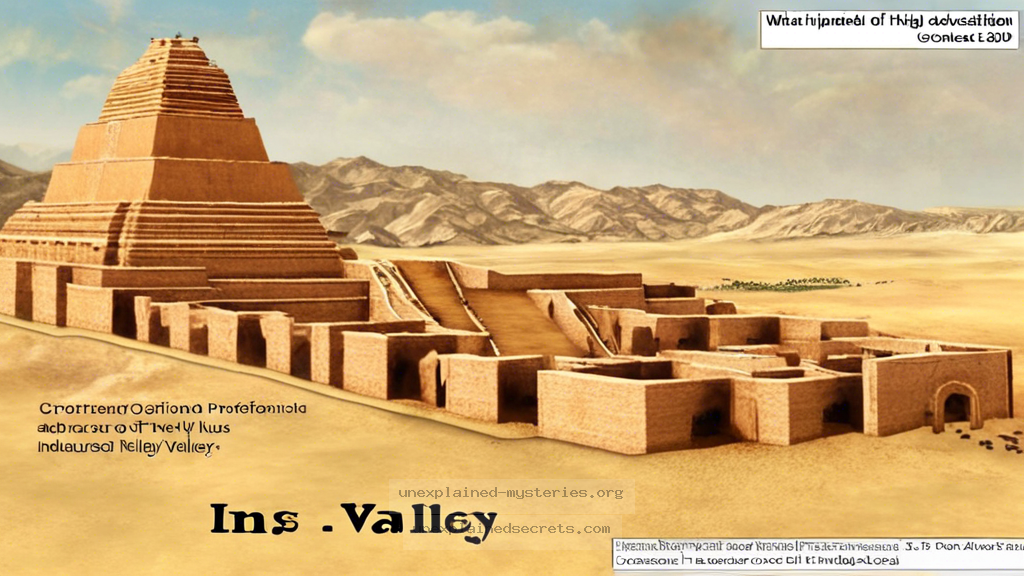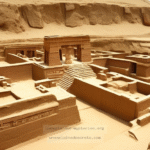What Happened to the Advanced Civilization of the Indus Valley?
What Happened to the Advanced Civilization of the Indus Valley?
The mystery surrounding the Indus Valley Civilization (IVC), which thrived between 3300 and 1300 BCE in present-day Pakistan and northwest India, has captivated historians, archaeologists, and the public alike. Known for its advanced urban planning, sophisticated drainage systems, and remarkable craftsmanship, the IVC was one of the world’s earliest urban cultures. Yet, despite its significance, the reasons for its decline and eventual disappearance remain largely unexplained. This question matters not only for understanding our past but also for drawing parallels to contemporary issues of sustainability, urbanization, and cultural resilience.
Historical Context of the Indus Valley Civilization
The Indus Valley Civilization was one of the three early cradles of civilization, alongside Mesopotamia and Ancient Egypt. Covering an area of approximately 1.25 million square kilometers, it was home to major cities like Harappa and Mohenjo-Daro. The civilization is renowned for its well-planned cities, complete with grid patterns, advanced drainage systems, and standardized fired-brick buildings, indicating a high level of social organization and technological advancement.
Trade networks extended as far as Mesopotamia, with evidence of goods like lapis lazuli and copper being exchanged. However, around 1900 BCE, signs of decline began to appear, leading to the eventual abandonment of major urban centers. Unlike other ancient civilizations that left behind extensive written records, the IVC’s script remains undeciphered, adding to the enigma surrounding its demise.
Core Concepts: Theories of Decline
Numerous theories have been proposed to explain the decline of the Indus Valley Civilization. They can generally be categorized into environmental, economic, and social factors.
- Environmental Changes: Climate change, particularly a shift towards aridity, is often cited as a primary cause. Archaeological evidence suggests a significant decline in monsoon rains around 2000 BCE, which would have severely impacted agriculture.
- Economic Decline: The disruption of trade networks, possibly due to environmental changes or conflicts, could have led to economic instability. The decline in the quality of pottery styles over time might also indicate a loss of economic sophistication.
- Social Factors: Internal strife or social upheaval could have contributed. Evidence of fortified structures suggests a possible increase in conflict between communities.
Practical Implications: What the IVC Teaches Us Today
The study of the Indus Valley Civilization offers valuable lessons for contemporary urban planning and sustainability. The advanced drainage systems and urban layout of the IVC serve as early examples of effective public health measures and urban design.
Modern cities can learn from the IVC’s focus on community infrastructure. For example, as cities continue to grow, issues such as waste management and water supply become increasingly critical. The IVC’s sophisticated systems highlight the importance of planning and foresight in urban development.
Alternative Perspectives: Theories of Survival
While many theories focus on decline, some researchers propose that the IVC did not vanish entirely but rather transformed. Evidence of rural settlements, which may have been part of a more decentralized society, suggests that the people adapted to changing conditions rather than disappearing altogether.
Some scholars argue that the civilization may have migrated towards the Ganges River, where conditions may have been more favorable. This theory posits that the societal structure evolved rather than collapsed, which could change how we interpret archaeological findings.
Common Misconceptions and Clarifications
One common misconception is that the Indus Valley Civilization was a homogenous culture. In reality, archaeological evidence indicates significant regional diversity in practices, languages, and social structures. The notion that the civilization was entirely peaceful is also debated; there is evidence of fortifications and potential conflicts.
Furthermore, the idea that the IVC disappeared entirely is misleading. While major cities were abandoned, smaller settlements persisted, indicating a transformation rather than a complete collapse.
Best Practices for Investigation and Study
Investigating the Indus Valley Civilization requires a multidisciplinary approach. Archaeologists, historians, and environmental scientists must collaborate to gain a comprehensive understanding. Here are some best practices:
- Interdisciplinary Research: Combining insights from different fields can provide a more complete picture of the civilization’s rise and fall.
- Technological Integration: Utilizing modern technology, such as ground-penetrating radar and remote sensing, can uncover hidden sites and artifacts.
- Community Involvement: Engaging local communities in research can provide valuable cultural insights and support for preservation efforts.
Future Developments: Ongoing Research and Discoveries
Research on the Indus Valley Civilization is ongoing, with new discoveries frequently challenging previous assumptions. Recent excavations in areas like Rakhigarhi in India have uncovered evidence of larger populations and advanced technologies.
Excitingly, advancements in genetic studies and isotopic analysis are shedding light on the dietary habits and migration patterns of the IVC’s inhabitants. The application of these scientific techniques could lead to breakthroughs in understanding the civilization’s complexities.
Conclusion: Reflecting on the Mysteries of the Indus Valley Civilization
The Indus Valley Civilization remains one of history’s most intriguing mysteries. The advanced urban planning, economic systems, and potential reasons for its decline offer valuable insights into the resilience and adaptability of human societies. As ongoing research continues to uncover new evidence, our understanding of this enigmatic civilization may evolve, providing further lessons for contemporary society. The interplay of environmental, economic, and social factors serves as a reminder that civilizations do not simply vanish; they adapt, transform, and sometimes leave behind legacies that echo through time.
Other Articles
Recent Posts
- What Happened to Flight MH370? The Conspiracy Theories That Still Haunt Us
- What Secrets Lurk Within the Walls of the Infamous Trans-Allegheny Lunatic Asylum?
- What Evidence Supports the Existence of Bigfoot in the Pacific Northwest?
- What Happened to the Indus Valley Civilization? Unraveling the Mysteries of Ancient Urban Life
- Can Telepathy Be Scientifically Proven Through Laboratory Evidence?







